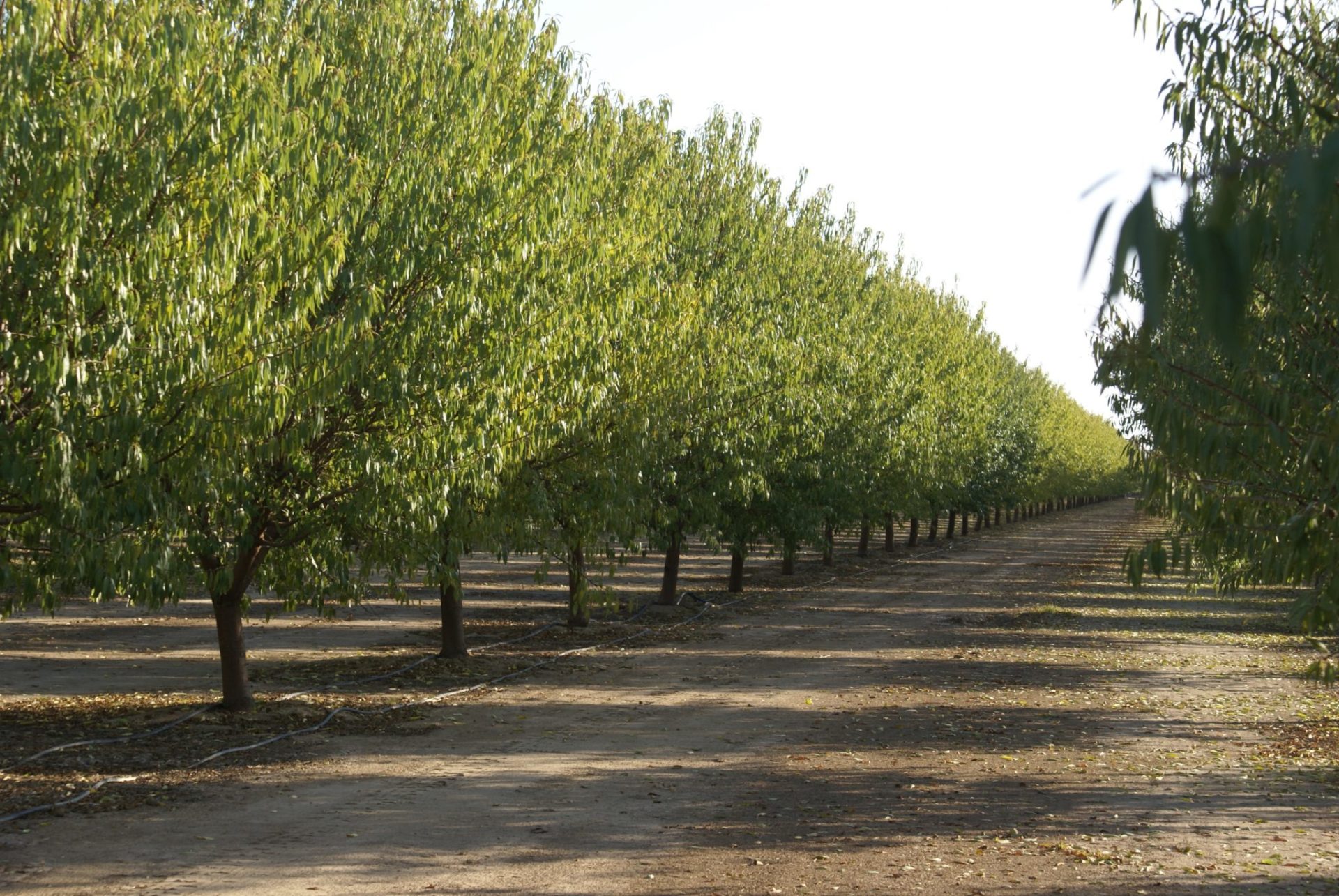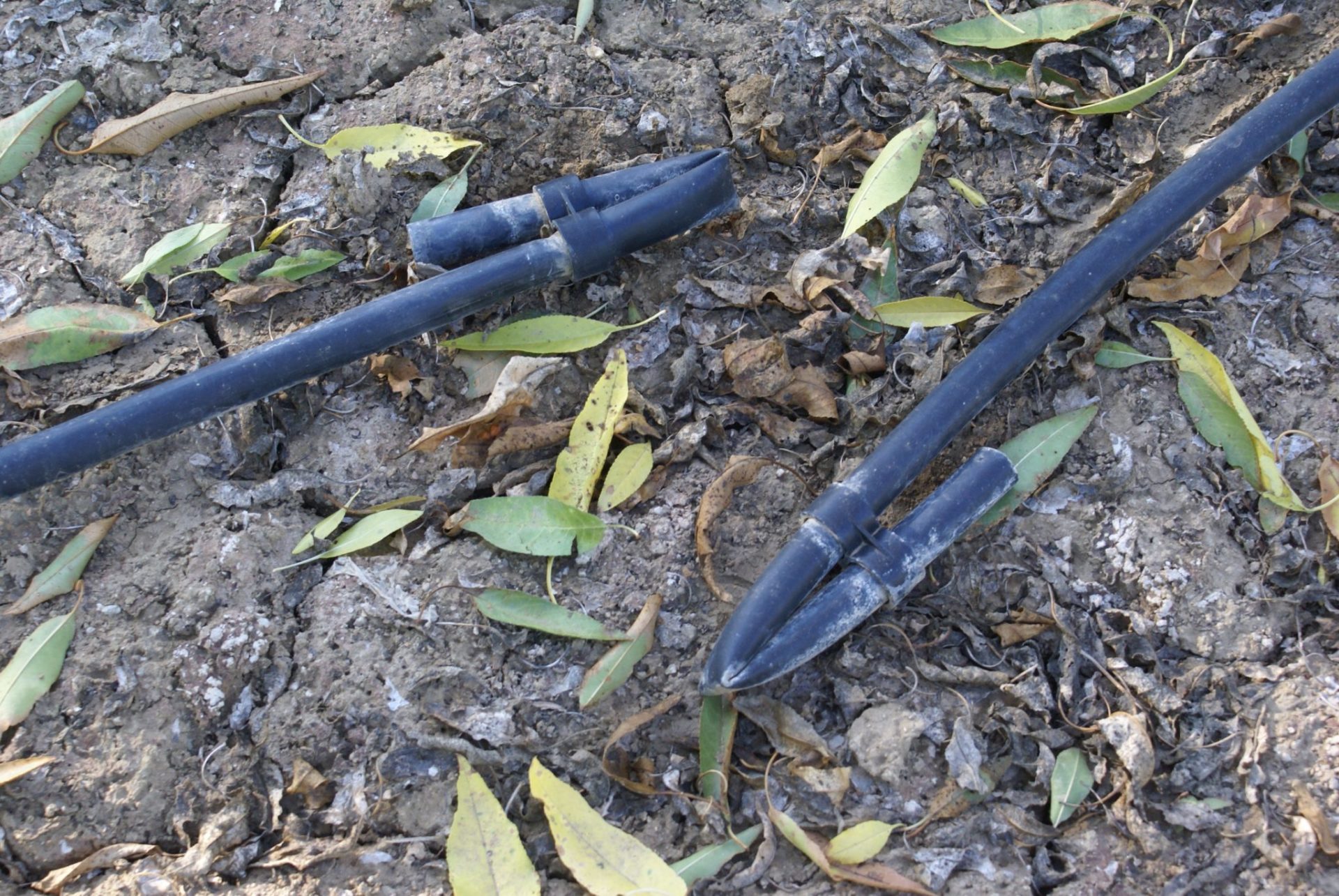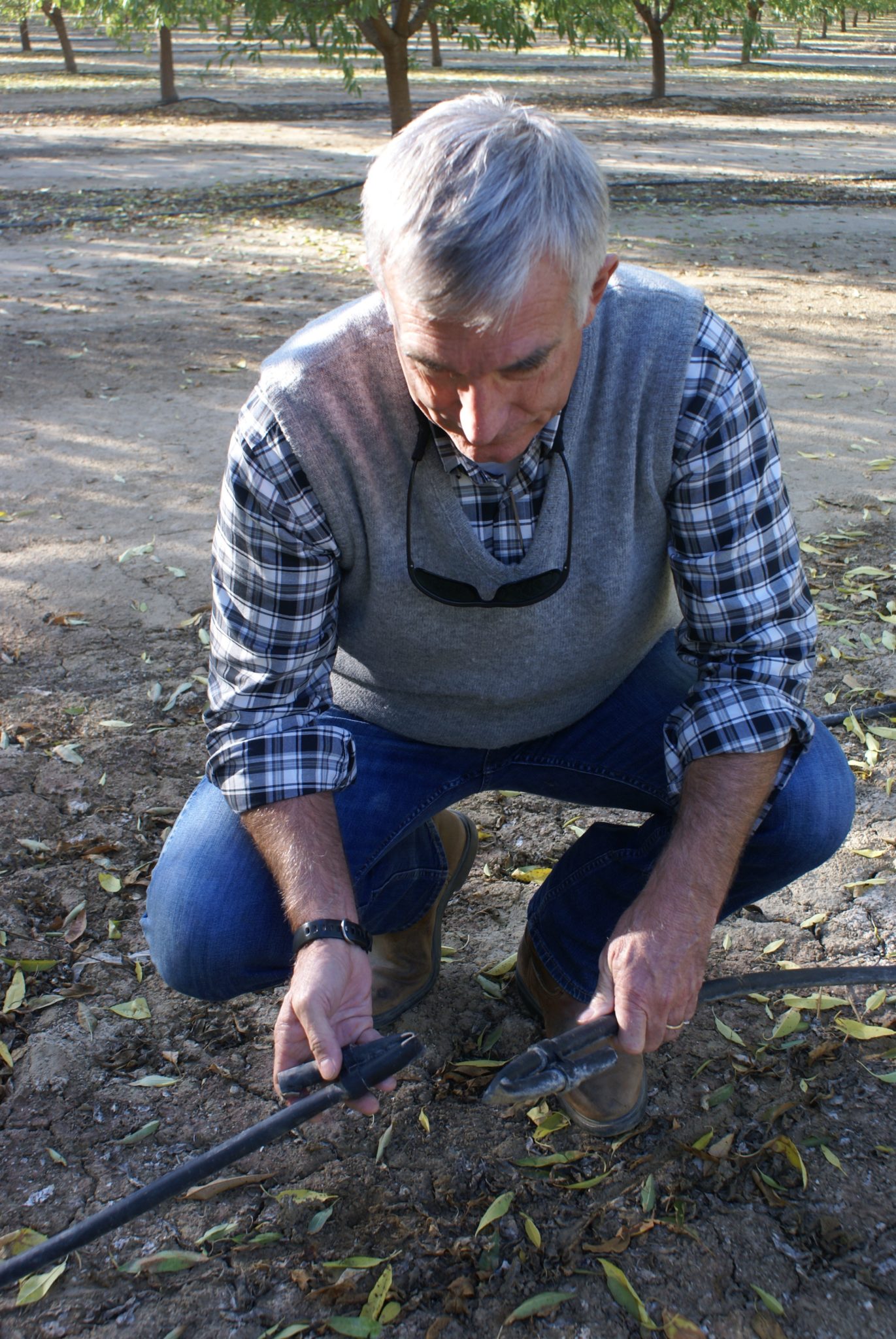
It is rare that an almond orchard or a site to be planted to almonds will have just one type of soil.
“There will be sand streaks or clay streaks in every site. It is rare to find just one soil zone in a block,” said Bill Loflin, president of Hydratec, a division of Laurel Ag and Water. “Go to Google Earth and look, you can see the sand streaks.”
Soil variability across an orchard block poses challenges with irrigation and fertigation efficiency. Pressurized irrigation systems, set up to deliver the same amount of water for the same length of time, do an adequate job, but depending on the soil variability, can end up over or under watering parts of the orchard.
A more complex irrigation system, called variable or differential rate irrigation system, is designed to closely match the amount of water delivered with the soil’s water holding capacity.
The range of soil types, combined with the shallow rooted nature of almond trees, makes variable rate irrigation systems a serious consideration when developing a new orchard. It is a more expensive consideration for an established orchard, but still has advantages in water and fertilizer savings, especially in challenging soils. Soil type differences are more pronounced on the western and eastern edges of the Central Valley with hardpan being one of the most challenging soil types.
Loflin, who has designed and installed variable rate irrigation systems throughout the valley, concedes that the value of the crop being irrigated has to justify the expense of installing and operating a variable rate system. The more intricate the system, the higher the cost. Less intricate systems that aim for a happy medium, but still address significant differences in soil types, is an option.

Meeting Tree Needs
Advantages of a variable rate irrigation system include more efficient use of water, by more precisely meeting the water needs of trees. Avoiding over watering can help with disease control. Trees stressed for water can lose production. Water saving can also reduce pumping costs in groundwater delivery. Fertilizer applied through a VRI system will also be used more efficiently.
Tom Devol, ABC’s senior manager for Field Outreach and Education, said growers who opt to install VRI in a new orchard are convinced the added expense of this irrigation system will pay off in terms of water use and efficiency. There is also a practical approach to considering how intricate of a system is needed. Looking at the predominate soil types and variability across the orchard site can help with that decision.
Devol said the process of designing an irrigation system involves breaking the site into sets. Traditional systems are often designed to match the amount of water available with the delivery via sets. With the variable rate system, the sets are broken down by soil type. Multiple sets in an orchard can be problematic due to management, but Devol said the advent of more affordable valve control systems plus the ability to remotely turn them on and off, makes such systems doable for growers.
Operating each set independently allows for pulse irrigation on the sandy soils and longer sets on soils with more holding capacity. Prior to availability of control systems, there was labor involved in turning valves off and on.
There are higher costs involved for the additional plumbing need for a VRI system, but as Devol pointed out, “It’s a 20-year decision.” Water savings and improved fertigation efficiency are driving decisions to consider VRI systems. The systems can also help ABC achieve a 2025 goal of reducing water use by 20 percent. Cost of installing a system in an existing orchard is higher than with a new planting, but savings in water and fertilizer over 20 years an incentive.
Many almond growers who opt for VRI are first obtaining aerial imaging data, Devol said. With an existing orchard, data collected over a couple of seasons can show how uniformly the irrigation system is operating. With that information, a decision can be made about the practicality of VRI system.
Irrigation engineer and almond grower Matt Angell notes that each system is site specific and one of the keys to designing a highly efficient system is to accurately determine the soil variability across the block to be planted.
Matching the System to the Orchard
He suggests using a Veris or EM 38 system which takes soil electrical conductivity measurements to determine soil variability. The soil EC sensors generate EC variation maps that are used to design the system. The soil EC information is recorded with a data logging device that records both soil EC and tags them with position information provided by a GPS unit.
Other considerations with a VRI system are matching the system to the pump capabilities and the orchard design. Breaking the system into smaller sets can involve more labor and cost, but it can help with higher distribution uniformity and the ability to irrigate in site specific blocks. Spacing the trees closer down the row in sandy soils with dual line drip will help normalize the yield as weaker soils typically grow smaller weaker plants, Angell said.
Angell adopted an irrigation strategy called partial root drying (PRD) that was developed at the University of Adelaide I South Australia for wine vineyards. The strategy uses two drip lines with one dripper on opposites sides of the vine. In 2009, he planted 100 acres of almonds and applied the strategy to almonds using a dual line drop with one line on each side of the tree. In a north to south facing planting for instance, Angell can irrigate either the east or west side of the tree row independently. The concept forces the tree to use both water and fertilizer more efficiently. American Farmland Trust is preparing a trial to validate the amount of water and fertilizer savings. Angell estimates he has saved 5 to 10% in water and 15 to 20 % in fertilizers while still maintaining in the top 10 percent of state average almond yields.
The Sustainable Groundwater Management Act will be driving irrigation decisions in the future, Angell noted. Efficient use of water and fertilizer will be critical with groundwater pumping restrictions. Knowing soil variability and optimizing water use will be vital for growers, he added.
ABC highlighted Kern County almond grower Kent Stenderup who installed a VRI system to deal with three distinct soil types.
Stenderup’s differential irrigation system places him at the high end of the Almond Irrigation Improvement Continuum, which was developed in consultation with University of California irrigation specialists as part of the ABC Accelerated Innovation Management program.
In his 160-acre VRI block, irrigation consultants layered results from electroconductivity testing, soil mapping, global infrared mapping and soil tests, and then configured drip laterals and manifolds to establish three distinct irrigation zones.
Stenderup received matching grant funds from the Natural Resources Conservation Service (NRCS) Environmental Quality Incentives Program (EQIP) to cover the additional $500- to $600-per acre installation costs in excess of his investment in a standard drip irrigation system.
















